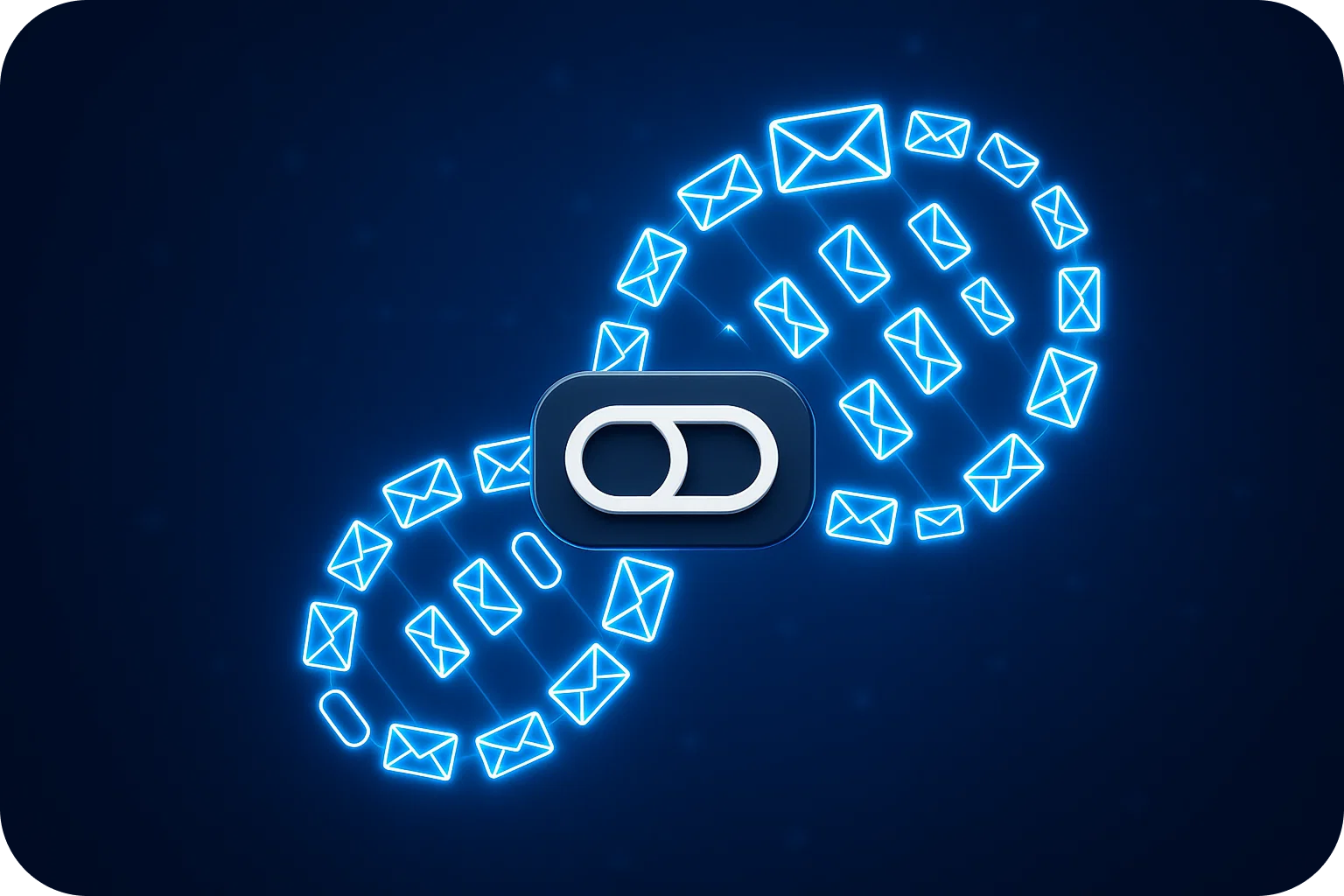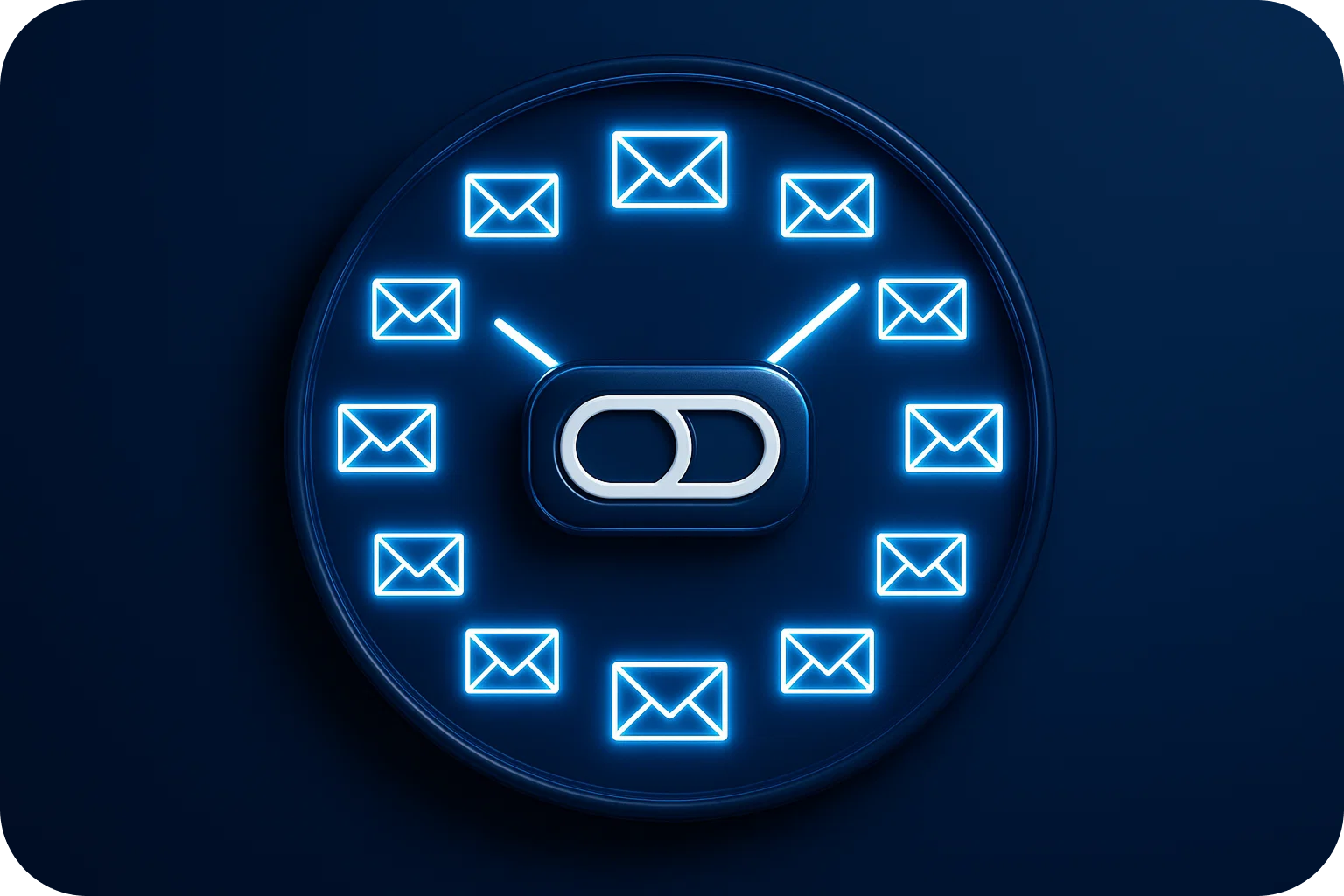Email Provider Reputation Inheritance: Why Your New Domain Carries Old Baggage

You've just registered a brand-new domain. Fresh start, clean slate, right? Not exactly. While your domain itself may be pristine, the email infrastructure you choose to send from carries its own history, and that history can significantly impact your deliverability from day one.
Understanding email provider reputation inheritance is crucial for anyone serious about cold email outreach, especially if you're scaling your campaigns or managing multiple domains. Let's explore why your new domain might be carrying old baggage and what you can do about it.
What Is Email Provider Reputation Inheritance?
Email provider reputation inheritance refers to the phenomenon where your sending reputation is influenced not just by your domain and content, but by the shared infrastructure you're using to send emails.
When you send emails through a provider, you're typically sharing IP addresses and infrastructure with other senders. If those senders have poor practices, high spam complaints, low engagement, blacklist appearances, their behavior can taint the reputation of the shared resources you're both using.
The Three Layers of Sender Reputation
Email providers like Gmail and Outlook evaluate sender reputation across multiple dimensions:
1. Domain Reputation Your specific domain's sending history, including bounce rates, spam complaints, and engagement metrics.
2. IP Reputation The reputation of the IP address(es) used to send your emails. Shared IPs carry collective reputation from all senders using them.
3. Infrastructure Reputation The broader reputation of your email service provider's entire sending infrastructure, including authentication practices and abuse monitoring.
All three layers interact to determine whether your emails land in the inbox, spam folder, or get blocked entirely.
Why Domain Age Matters (But Isn't Everything)
There's a common misconception that domain age alone determines email deliverability. While it's true that newer domains face more scrutiny, the reality is more nuanced.
The New Domain Challenge
Internet service providers (ISPs) treat new domains with caution because:
- No sending history means no trust signals
- Spammers frequently register new domains to evade blocks
- Pattern recognition systems flag sudden high-volume sending from unknown domains
However, a new domain on quality infrastructure with proper warm-up can achieve excellent deliverability faster than an older domain with poor sending practices.
The Infrastructure Advantage
This is where your email provider choice becomes critical. A new domain sending through:
- Established, reputable infrastructure benefits from the provider's positive relationship with ISPs
- Clean, monitored IP pools avoid inheriting a negative reputation from bad actors
- Proper authentication and compliance signal legitimacy to receiving servers
Conversely, even an aged domain can suffer if it migrates to an infrastructure with a poor reputation.
How Bad Actors Affect Your Deliverability
When you share sending infrastructure with others, you're essentially in a reputation neighborhood. And like any neighborhood, a few bad actors can affect everyone.
Common Inherited Reputation Issues
Shared IP Contamination If another sender on your shared IP gets blacklisted or generates high spam complaints, your deliverability can drop even if your content and practices are pristine.
Provider-Wide Blocks Some email providers implement blocks at the infrastructure level. If your ESP has inadequate abuse monitoring, entire IP ranges can be flagged.
Authentication Failures Poorly configured SPF, DKIM, or DMARC records across a provider's infrastructure can create trust issues that affect all senders.
Volume Spikes Sudden sending spikes from other users on shared infrastructure can trigger rate limiting that impacts your campaigns.
The Hidden Cost of Cheap Email Infrastructure
Budget email providers often cut costs by:
- Overselling shared IPs with hundreds of senders per IP
- Minimal abuse monitoring allowing spammers to operate longer
- Poor authentication setup creating deliverability vulnerabilities
- Limited IP rotation making it harder to escape inherited reputation issues
The result? Your carefully crafted cold email campaigns may be doomed before they start, regardless of your domain age or content quality.
How to Reset or Rebuild Your Sender Identity
If you suspect you're carrying inherited reputation baggage, here are strategic approaches to reset your sender identity:
1. Audit Your Current Infrastructure
Start by understanding your current situation:
- Check if your sending IPs are blacklisted (use tools like MXToolbox)
- Review your provider's abuse policies and monitoring practices
- Analyze your deliverability metrics across different ISPs
- Identify patterns in spam folder placement or blocks
2. Consider Dedicated IP Infrastructure
For high-volume senders or those with strict deliverability requirements, dedicated IPs offer:
- Complete reputation control without shared infrastructure risks
- Predictable deliverability based solely on your practices
- Easier troubleshooting when issues arise
- Better scalability for growing outreach programs
The trade-off is higher cost and the need to build reputation from scratch.
3. Implement Proper Email Warm-Up
Whether using shared or dedicated infrastructure, proper warm-up is essential:
- Start with low daily volumes (20-30 emails per inbox)
- Gradually increase over 3-4 weeks
- Maintain consistent sending patterns to build trust
- Engage with high-quality recipients who are likely to open and respond
- Monitor deliverability metrics closely during warm-up
4. Diversify Your Sending Infrastructure
Don't put all your eggs in one basket:
- Use multiple email providers (Google Workspace, Microsoft 365, specialized cold email infrastructure)
- Distribute sending across multiple domains (3-5 inboxes per domain maximum)
- Rotate infrastructure for different campaign types or audiences
- Maintain backup sending capacity in case of reputation issues
5. Choose Infrastructure Partners Carefully
When selecting an email infrastructure provider, evaluate:
- Transparency about IP sharing and abuse monitoring
- Clear authentication setup and compliance standards
- Proven deliverability rates (look for 96%+ inbox placement)
- Responsive support for troubleshooting reputation issues
- Scalability options including dedicated IP availability
Best Practices for Maintaining Clean Sender Reputation
Once you've established or reset your sender identity, maintain it with these practices:
Monitor Engagement Metrics Track open rates, reply rates, and spam complaints. Declining engagement is an early warning signal.
Maintain List Hygiene Remove bounces immediately, suppress unengaged recipients, and never purchase email lists.
Respect Volume Limits Stay within recommended sending limits (typically 50-100 emails per inbox per day, with 20-30 being optimal).
Authenticate Properly Ensure SPF, DKIM, and DMARC are correctly configured and passing.
Segment Your Sending Use different domains and infrastructure for different campaign types to isolate reputation risk.
The Bottom Line
Your new domain doesn't exist in a vacuum. The email infrastructure you choose to send from carries its own reputation, positive or negative, that directly impacts your deliverability from day one.
While domain age plays a role in sender reputation, the quality of your email infrastructure, proper warm-up practices, and ongoing monitoring are far more critical to achieving consistent inbox placement.
By understanding email provider reputation inheritance and taking strategic steps to control your sender identity, you can achieve 96-98% deliverability rates even with relatively new domains, provided you're using quality infrastructure and following best practices.
The key is choosing an email infrastructure that gives you control over your reputation destiny
rather than leaving it to chance in an overcrowded shared environment.
Ready to take control of your email deliverability? Mailpool provides enterprise-grade email infrastructure with 98% deliverability rates, proper authentication setup, and the flexibility to scale from shared IPs to dedicated infrastructure as your needs grow. Get started in just 10 minutes at mailpool.ai.
More articles
Get started now




%201.png)




.png)
